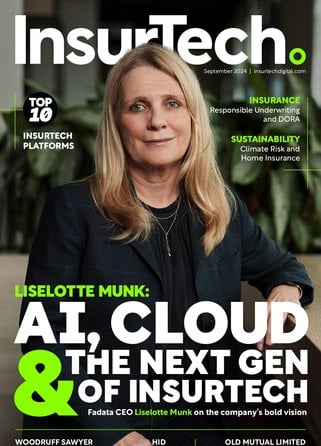Deloitte: Fee-Based Services to Transform US P&C Insurance

US property and casualty insurers face pressure to move beyond premium increases as their primary growth strategy, with fee-based risk management services emerging as a potential revenue source worth US$49.5 billion by 2030, according to new research from Deloitte.
The consultancy’s analysis suggests fee-based revenue for US P&C insurers will grow from an estimated US$21.6bn in 2023 to US$49.5bn by 2030, representing a compound annual growth rate of 12.55%. This shift reflects mounting customer demand for predict-and-prevent offerings rather than traditional reactive insurance models.
Current market conditions show US P&C insurers returned to profitability over the past year primarily through premium increases. However, Deloitte's research indicates continuous price rises present sustainability challenges for long-term success.
Recent wildfire events in Los Angeles demonstrate the potential effectiveness of proactive risk management approaches. Building resilient homes and real-time electrical grid monitoring could have minimised devastation, whilst smart home devices and automatic water leak detection systems have shown capability to reduce insurance claims by up to 93%.
Deloitte research highlights business model transformation requirements
The traditional insurance business model centres on analysing and assessing risk retrospectively, but technological advances including generative artificial intelligence and Internet of Things devices enable prediction and prevention of losses across business lines. Some insurers already provide risk management services, data-sharing arrangements and white-label partnerships, though few monetise these offerings effectively.
Many insurers currently offer risk management services without charge, hoping service provision costs will offset through reduced claim expenses. However, as customers become more aware of financial benefits from investing in risk management mechanisms, insurers must prepare for business model changes that move away from rearview-mirror risk assessment.
- Fee-based revenue for US P&C insurers projected to reach US$49.5bn by 2030 from US$21.6bn in 2023
- Smart home devices and water leak detection systems reduce insurance claims by up to 93%
- Arthur J. Gallagher derives 93% of risk management services revenue from non-brokerage clients
P&C insurers currently derive revenue primarily from insurance premiums and investment returns. Even amongst insurers that monetise additional services, many fail to exceed 3% of total revenue from these sources. Any meaningful increase in service revenues would represent a substantial industry shift.
Commercial lines dominate current fee-based service offerings
Today's fee-based service offerings focus predominantly on commercial lines due to contract complexity and higher values. These services help companies prevent and recover from losses through onsite risk inspections and virtual educational tools that enable safer business operations.
The commercial space presents competitive challenges as insurers potentially compete with insurance brokers and risk management consultants. However, expanding existing risk management and loss control services could provide successful revenue growth avenues.
Arthur J. Gallagher & Co. demonstrates the potential for serving non-client customers, with approximately 93% of its risk management services revenue derived from non-brokerage clients. Insurers could provide standalone offerings to non-clients or collaborate with competitors through data-sharing and other services to strengthen relationships and grow fee revenues.
AXA XL and Chubb pioneer new operating models
Insurers explore new operating models to predict and prevent claims, including partner networks that provide customers comprehensive risk prevention services. AXA XL's construction insurance offering supplies contractor clients with access to more than 30 technology providers designed to reduce risk and enhance risk management capabilities.
Chubb launched a global climate business in 2023 that provides risk management and resiliency services for organisations managing climate change impacts. These initiatives demonstrate how insurers develop sophisticated predict-and-prevent services beyond traditional coverage models.
Personal lines risks increase in complexity, from autonomous vehicle insurance to severe and frequent weather events. Whilst this complicates underwriting and portfolio management, technology advances enable insurers to assist individuals in predicting and preventing losses on scalable bases.
Some insurance companies contract with private firms to provide wildfire defence services, helping policyholders prepare homes for potential wildfires and respond during fire events. Preventive efforts could expand further, with Deloitte's 2024 research suggesting that investing US$3.35 billion to bring US homes up to building code standards could reduce losses by US$37 billion by 2030.
Technology companies and brokers present competitive threats
Insurance brokers, possessing extensive data and loss prevention expertise, represent natural competitors in the fee-based services market. Technology companies building risk management platforms for businesses and consumers also pose competitive threats.
However, these competitors could become partners under appropriate circumstances, either through affiliate networks or joint offerings. Timing appears critical for insurer success, as competitors may capture market opportunities if insurers fail to act promptly.
Building resilient homes may require investments too substantial for insurers to bear independently, but they could drive adoption through fee-based services including guidance on resilient materials, contractor sourcing and technology installation. Cost and savings sharing between insurers and customers could enable these scenarios.
The shift towards predict-and-prevent business models emphasises opportunities for fee-based services to complement traditional income sources. Insurers seeking future success must consider incorporating advanced technologies and alternative data sources to create comprehensive fee-based service suites that benefit all stakeholders.
Make sure you check out the latest industry news and insights at InsurTech and be part of the conversation at our global conference series, FinTech LIVE.
Discover all our upcoming events and secure your tickets today.
InsurTech is a BizClik brand
Featured Articles
Pipe’s underwriting model sees 98% offer acceptance globally, expanding its reach to new markets with seamless financial solutions
Absa Life implements Sapiens suite across funeral business as foundation for AI-driven expansion
Markel's fintech insurance chief warns of rising synthetic fraud as 79% of UK firms lose £500K+, with new regulations shifting liability to providers






